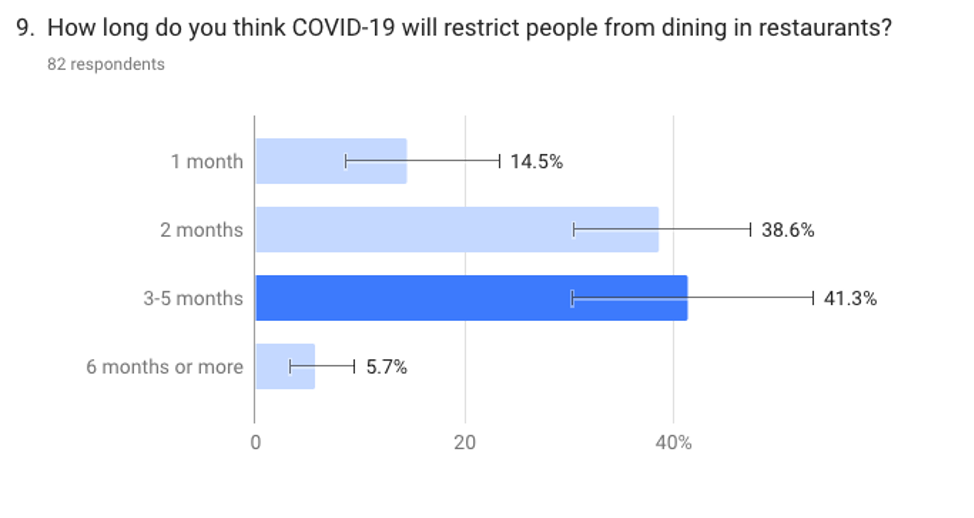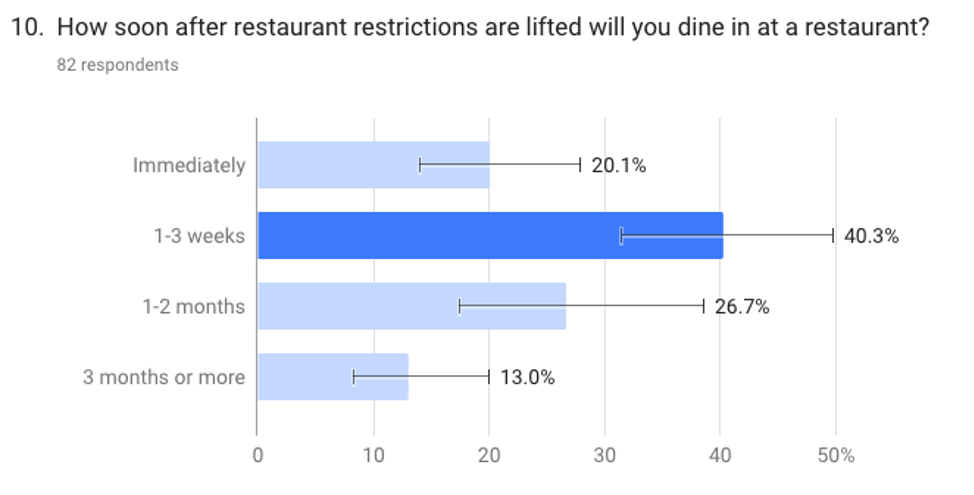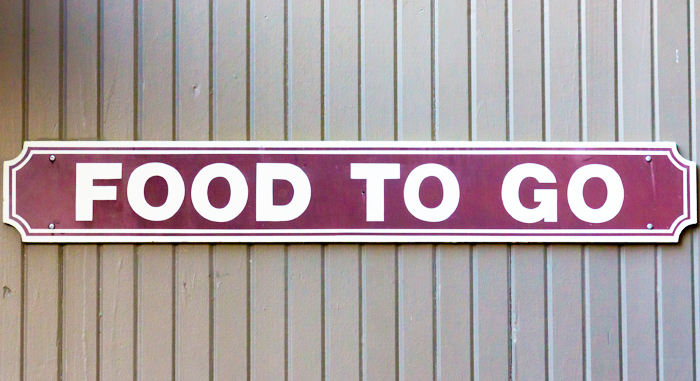In just a few short weeks, many Americans’ lives have been turned upside down by the Coronavirus (COVID-19). Stay-at-home orders are becoming increasingly common with one of the byproducts being the forced closure of dining at restaurants. This has caused small local to national chain restaurants to shift their focus on takeout and delivery options to survive.
We surveyed 125 consumers in the U.S. to gain insight into how consumer behavior is shifting when people want to move outside of their kitchens to get meals. The responses were both predictable and surprising, but gave us some clear insight into how restaurants can better position themselves in today’s growing takeout/delivery market.
What Restaurants Can Do During the Behavior Change
Ignoring the forced shift in consumer behavior is a big mistake. Restaurants overall are going to see an increase in takeout/delivery and while it may not fully replace the dine-in revenue, it is the area with the highest potential return that can be worked on now. Those restaurants that communicate with people in ways that resonate with them in a meaningful manner are going to win customer loyalty for the long haul. For most restaurants, customer loyalty is the secret to lasting profitability.
Right now, people are looking for value-driven meals (lower cost/person) and have two leading considerations.
- Community Support: Consumers have empathy and understand that their friends and neighbors work at the restaurants and have been particularly hard hit in this crisis.
- COVID-19 Preparedness: People need to know that the restaurants are taking every precaution they can to keep safety at the forefront of the takeout/delivery transaction.
To cover these key points, we believe communicating that while the business is not as busy as it was a few weeks ago, there’s a strong effort to keep people employed. Maybe there have been shift reductions rather than individual layoffs. If the restaurant is taking advantage of the government support becoming available, let people know. All of this communication helps build authenticity.
Many people aren’t aware of the level of cleanliness required to run a restaurant, so now is an excellent time to educate them on what is happening to ensure the safety of their employees, the food they prepare – and the safety of their customers.
A few key safety messages may include
- Social distancing is being practiced at all of the restaurant’s facilities.
- All employees are healthy. Any employee exhibiting any flu-like symptoms are being asked to self-quarantine for 14 days and get tested, if possible.
- All cleaning methods in restaurants are meeting or exceeding recommendations from the Center for Disease Control and Prevention (CDC) and the World Health Organization (WHO).
- All restaurants and lobbies for food carryout have commercial grade HEPA (High Efficiency Particulate Air) filters that filter the air multiple times per hour. These HEPA filters are the same type as used by hospitals to clean the air.
- All restaurant employees and delivery personnel are wearing latex gloves and following a strict changing policy.
- “Touchless Pickup”: When visiting a restaurant for carryout the restaurant will have an employee open the door on your behalf or they will meet you outside so no door touches are needed.
- “Touchless Delivery”: When food is delivered, the restaurant will leave it on the porch for you.
- All takeout/delivery bags and containers are sealed to avoid contamination.
These are unprecedented times and we’re all figuring this out as we go. While they can’t visit their favorite restaurants right now, people do want to support them. Restaurants of all sizes are working hard and doing everything they can to make it through this crisis. Those that communicate that we’re all in this together while keeping safety first will earn people’s trust, and in turn, will win loyal customers.
For a more detailed look at exactly what consumers had to say, here are the key insights from the survey.
- Consumers Don’t Want to Spend a Lot
- They Are Eager to Support the Local Community, But Are Concerned
- We’re Already Getting Bored at Home
- Taking Care of Others Matters
- Predicting the Future
The Old Normal
Interestingly, 54% of respondents didn’t order takeout/delivery weekly (excluding pizza), while 40% did so 1-3 times per week. Similarly, 50% ate at restaurants with table service 1-3 times per week, while 46% don’t eat in restaurants weekly.
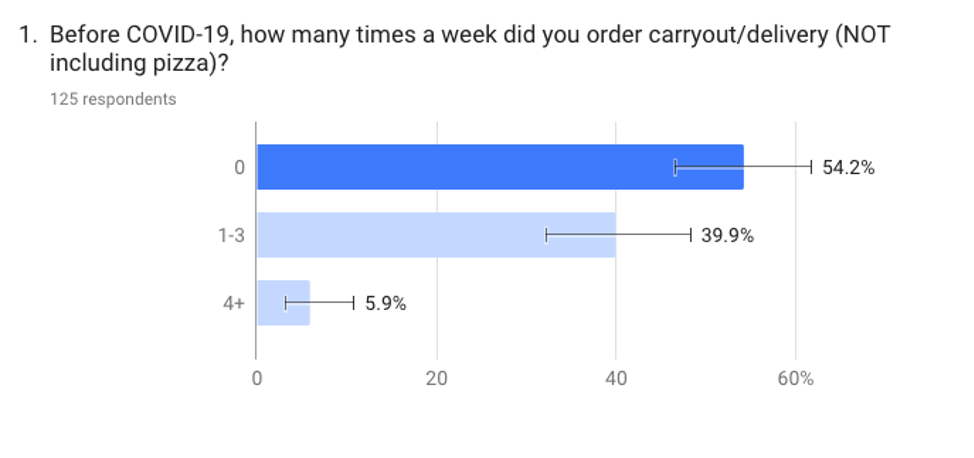
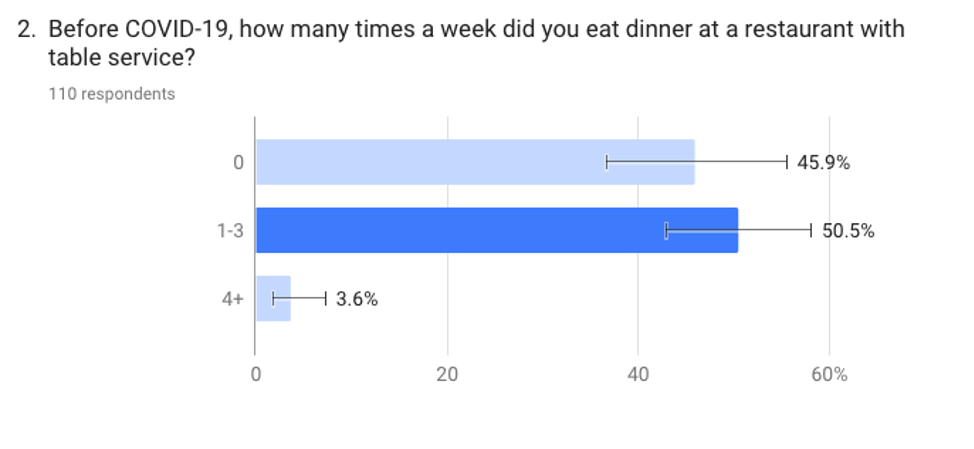
The New Normal
Since COVID-19, 38% are likely to order carryout/delivery with the same regularity as before, while 22% will do so less frequently and 24% more frequently. 16% said they won’t order carryout/delivery at all.
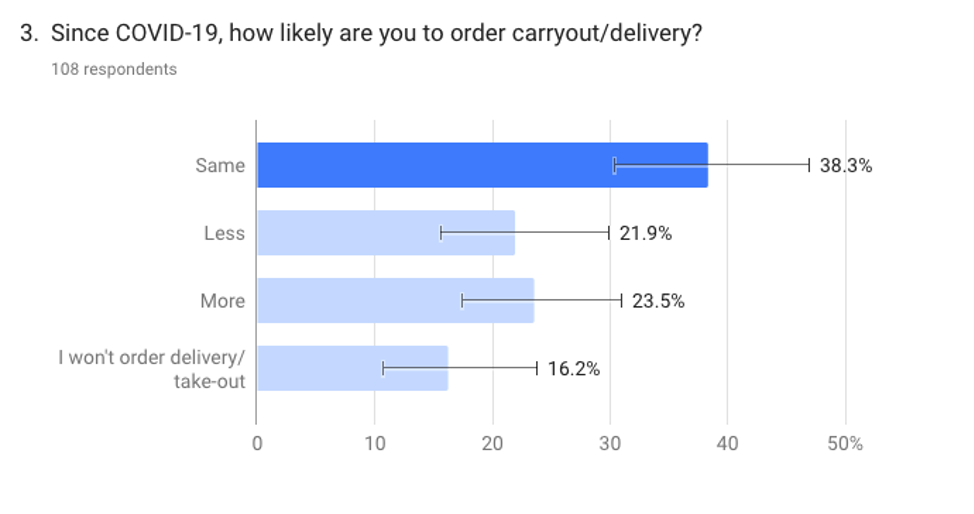
Consumer Don’t Want to Spend a Lot
Price expectations appear on the low side with 50% of respondents reporting they would expect to pay $11-$15 per person for carryout/delivery (not including pizza) and another 33% expecting to pay less than $10 per person.
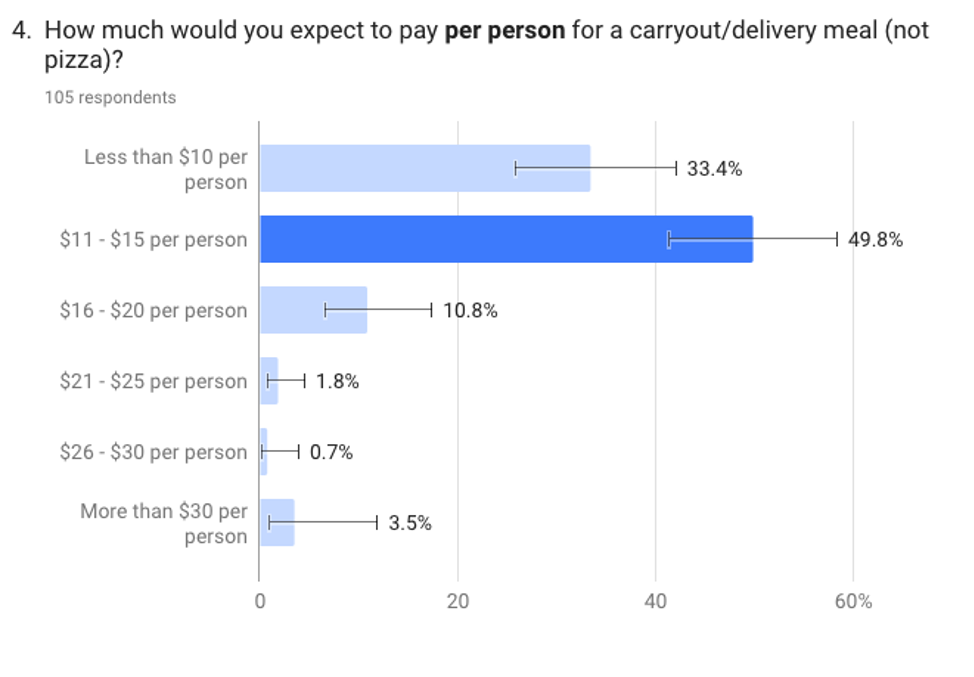
They Are Eager to Support the Local Community, But Are Concerned
Interestingly, the most important factor when selecting a carryout/delivery provider is supporting the local community during the crisis with 45% of responses. A close second with 36% is understanding what COVID-19 precautions have been taken by the restaurant as they are concerned about exposure. Price as a distant third with only 9% followed by speed of delivery/order readiness at 7%.
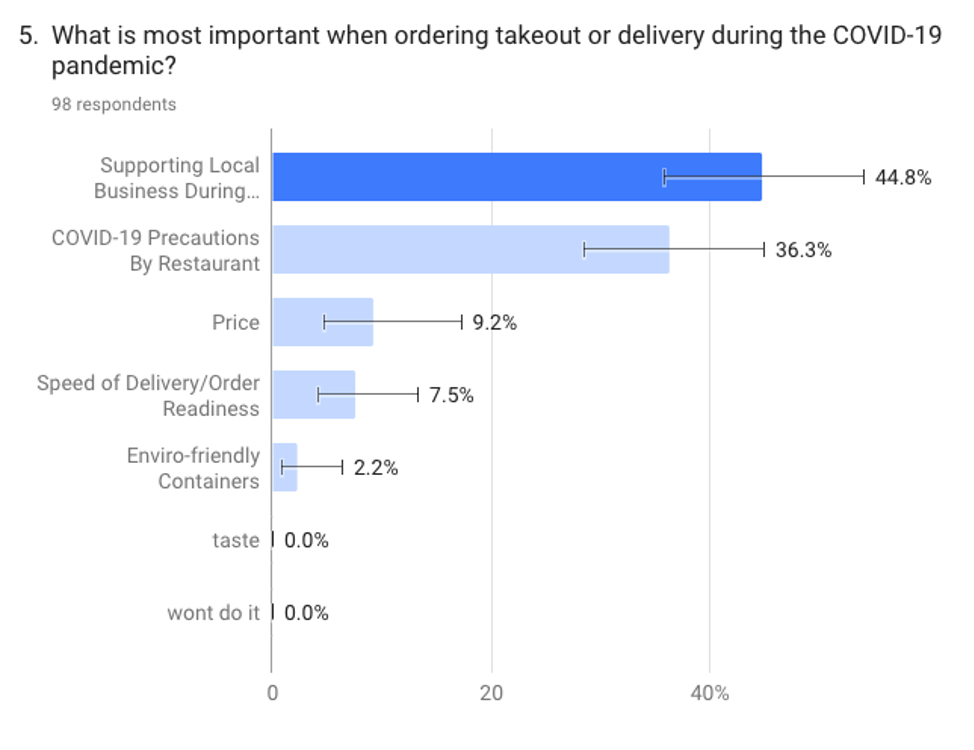
We’re Already Getting Bored at Home
In the few short weeks since the virus began impacting our lives, people are already looking for ways to change things up at home. When asked why people would order carryout/delivery, 46% wanted to break up the monotony of being at home and 42% wanted to treat themselves and their family. 22% noted not having the groceries to make a meal and 18% noted that they were juggling multiple responsibilities and wanting to leave the cooking to others.
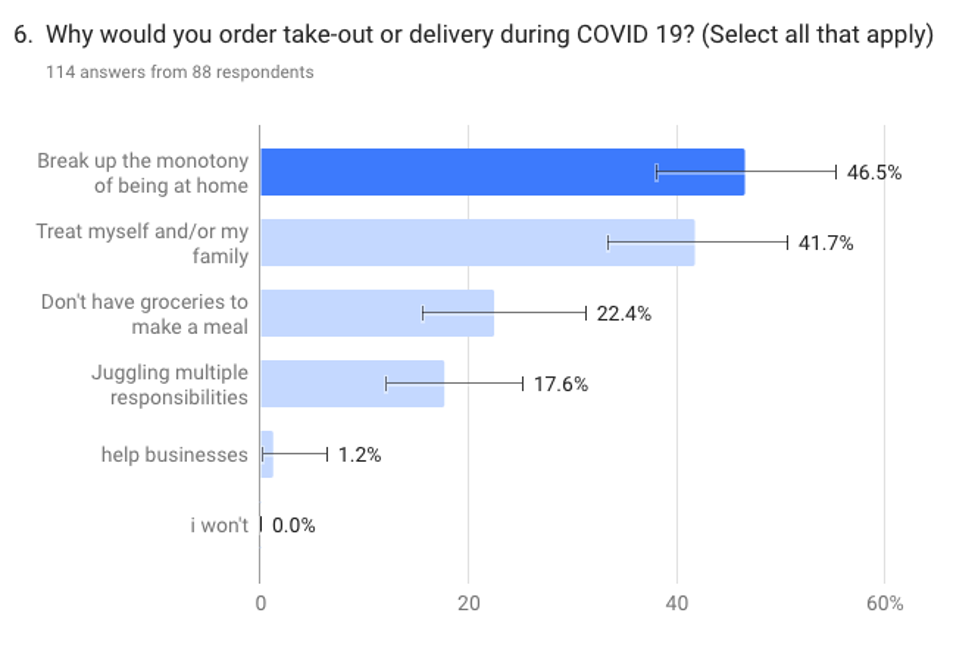
Taking Care of Others Matters
39% of respondents said that they’ll be eating their meal with others in their household, and 59% said they are very or somewhat likely to order takeout/delivery for a neighbor or friend in need.
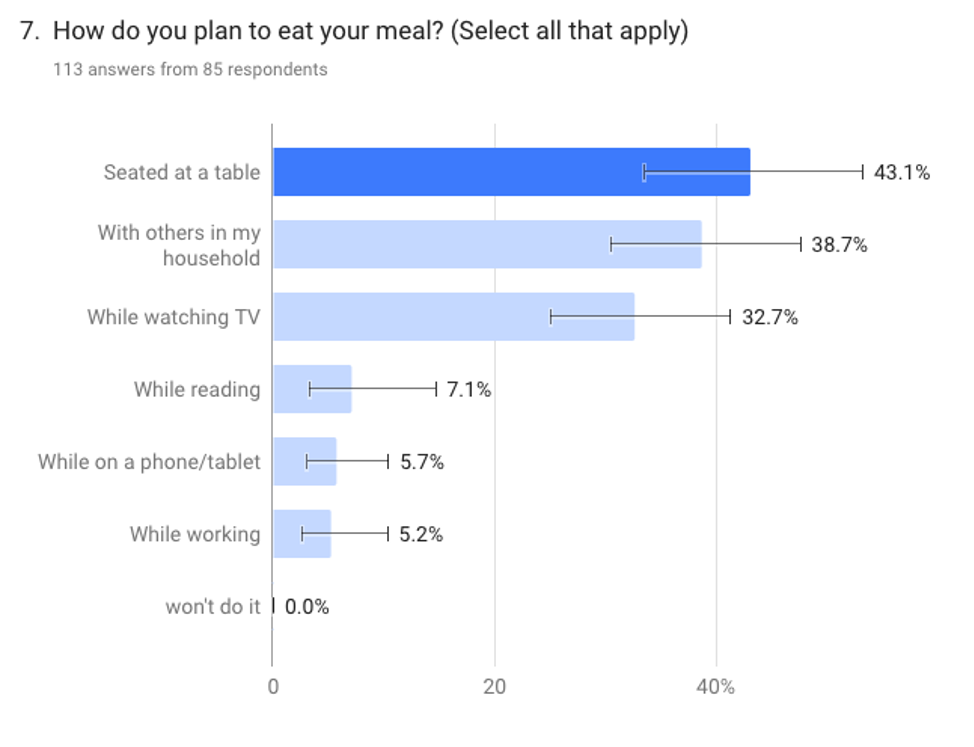
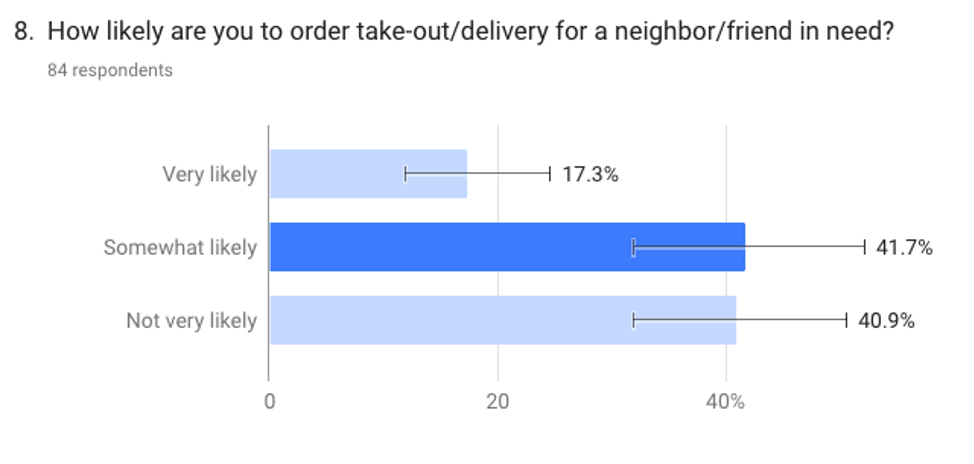
Predicting the Future
When it comes to people’s expectations, only 6% think that COVID-19 is going to last 6 months or more with 53% thinking it will last 1-2 months and 41% predicting 3-5 months. After social distancing restrictions are lifted and restaurants can serve in their dining rooms, 20% said they would dine in immediately, while 40% said they would wait 1-3 weeks and 40% would wait a month or more.
